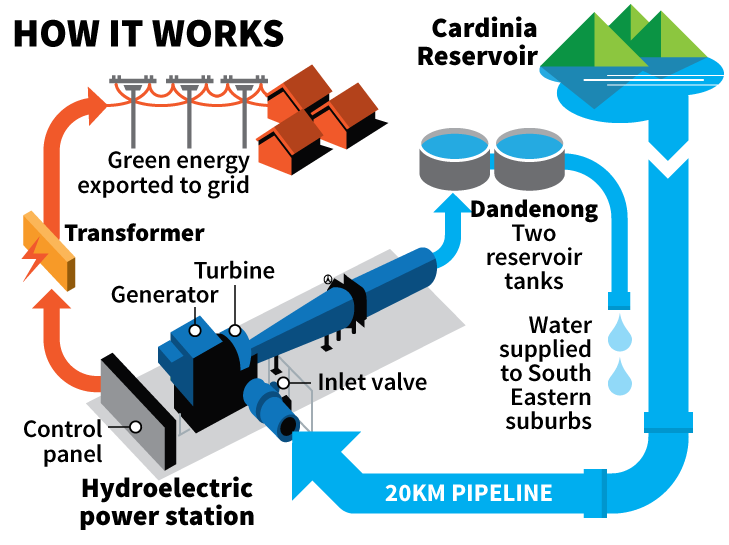Melbourne Water's Network of 'Mini-Hydro' Electric Plants
Published on by Water Network Research, Official research team of The Water Network in Technology
Melbourne Water is creating a network of "mini-hydro" electric plants generating electricity in suburban Melbourne, and in the hills beyond.

With the addition of Melbourne Water's 14th hydroelectric plant, a "mini-hydro" to be turned on in Mt Waverley, Melbourne Water's hydroelectric system generates enough power to supply more than 14,100 homes. Eleven of the plants are "mini-hydro" plants.
It's a system that the water company hopes to expand further.
"We are looking at up to 10 sites in our stage three program, which is in feasibility study now," said Melbourne Water senior project manager Ian Royston, during a visit to the new Dandenong North "mini-hydro".
This plant, which sits between two huge water storage tanks and EastLink, and about 40 metres away from the closest house, started operating in April. It is one of five new "mini-hydro" plants commissioned since December.
Water rushes through the pipe into the plant at a rate of about 40 megalitres per day, spinning a large turbine at about 1520RPM to create electricity.
The end result from this plant is about 1273 megawatt hours of electricity per year, enough to power about 259 homes.
After it produces electricity, the water is then stored in the vast storage tanks nearby, and eventually emerges from kitchen and bathroom taps, shower heads and hoses in Melbourne's south eastern suburbs. It is safe drinking water.
"Looking at our water supply system business, as we've progressively built hydro generation, we now produce more electricity than we consume," Mr Royston said.
The five new mini-hydros are at Mt Waverley, Dandenong North, Wantirna, Boronia and on the Cardinia Creek at Cardinia Reservoir.
The Mt Waverley plant will produce the most power of the five new sites, about 2270 megawatt hours of electricity per year, or enough to power about 462 homes.
Water Minister Lisa Neville lauded the mini-hydro plants, describing them as "a win for the environment and a win for water consumers".
She also said: "Electricity is one of the biggest costs for water authorities. Projects like these help drive down these costs, and reduce water bills for households."
Read more: The Sydney Morning Project
Media
Taxonomy
- Technology
- Integrated Urban Water Management
- Urban Water
- Energy
- Hydropower
- Urban Resource Management
- Hydroelectric Energy
- Hydro Power Planning